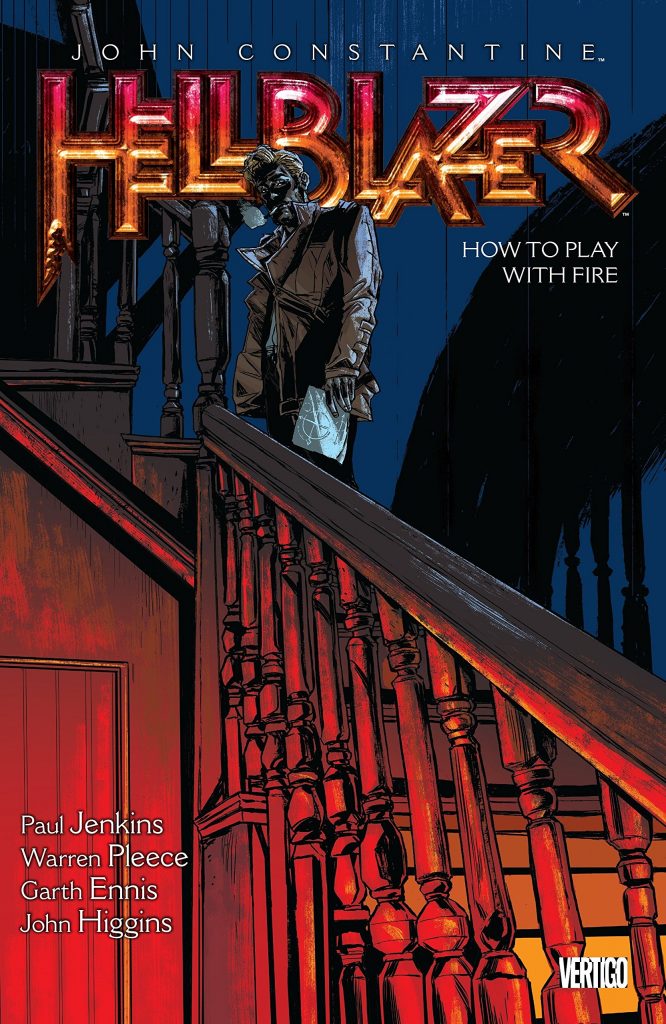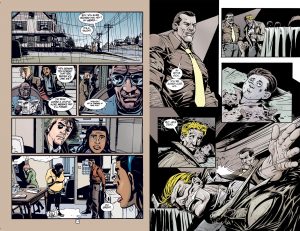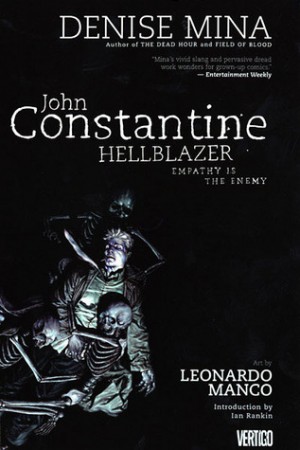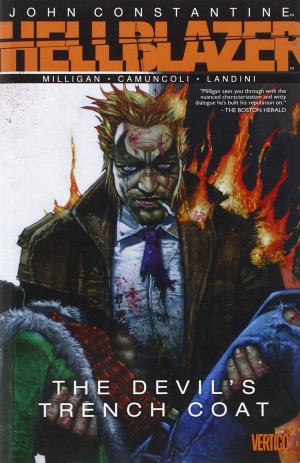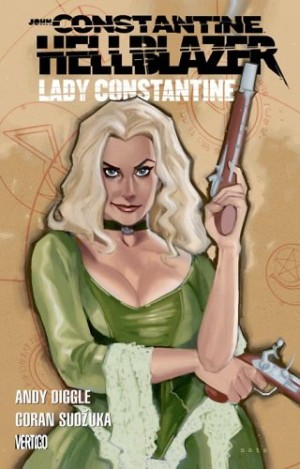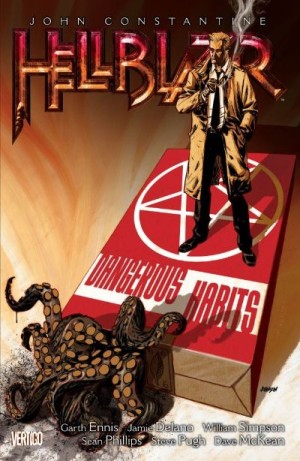Review by Karl Verhoven
Reprinting every issue of Hellblazer in chronological order for this series results in some strange combinations of creators sitting side by side. How to Play With Fire sees the final work of Paul Jenkins on the series merged with a coda from his predecessor Garth Ennis. It provides a complete contrast in writing styles. Jenkins relies heavily on providing John Constantine with a voice via his narrative captions. They’re clever, a balance between being erudite and coarse – “It was Protagoras I think who first came up with the curious notion that man is the measure of all things. Stupid git. It’s safe bet he never drank in this boozer or he’d have revised his theory quite considerably.” Ennis built his earlier Hellblazer stories almost entirely via dialogue, keeping Constantine under wraps and somewhat unknown. We know him to be a trickster, but if it’s dialogue rather than an internal monologue, it’s a less reliable guide to the truth. This time he has Constantine addressing the audience directly, as if presenting a stand-up routine with interludes.
Almost as if it’s a contractual obligation, sooner or later every British writer on a Vertigo series takes a skewed look at the USA, so Jenkins uses Constantine to comment on what he dislikes. It’s a long list, but within it there’s some insight and affection to sit alongside the observation, yet like every other writer before him, he drags it on too long. There’s something wrong with the USA, Constantine knows who’s behind it, but not how to stop it, and the eventual solution is subtle, but downbeat and anticlimactic.
Warren Pleece draws both Constantine in the USA and his return home, good with the essential grimy quality to Constantine’s life, but sometimes awkward, the realistic needs of the strip clashing with his standard heavy line. On the closing story John Higgins gets to design a memorable character, but we don’t see him until well into the story. Higgins’ artwork is effective, in the same sort of arena as Dave Gibbons, but without quite the elegance.
In the final accounting Jenkins’ run on Hellblazer is good, but he’s better with shorter stories than longer ones, where he tends to slot in so many diversions he loses the cohesion, but that’s not the case for the title story. One by one all Constantine’s friends past and present either turn on him or desert him. It’s an effective ground-clearing exercise with a final twist, although some of it won’t make much sense if you’ve not read Jenkins’ earlier material.
Ennis’ return is a novelty, in which demons play a part, but the real threat is old school London gangsters and an incredibly sinister character of Constantine’s own making. There’s some very dark humour at work, and the payoff is good, but getting there takes longer than it should. Three or four episodes would have produced a taut thriller, but at five it’s stretched.
The chronological reprints continue with Warren Ellis’ take on Constantine in Haunted.
